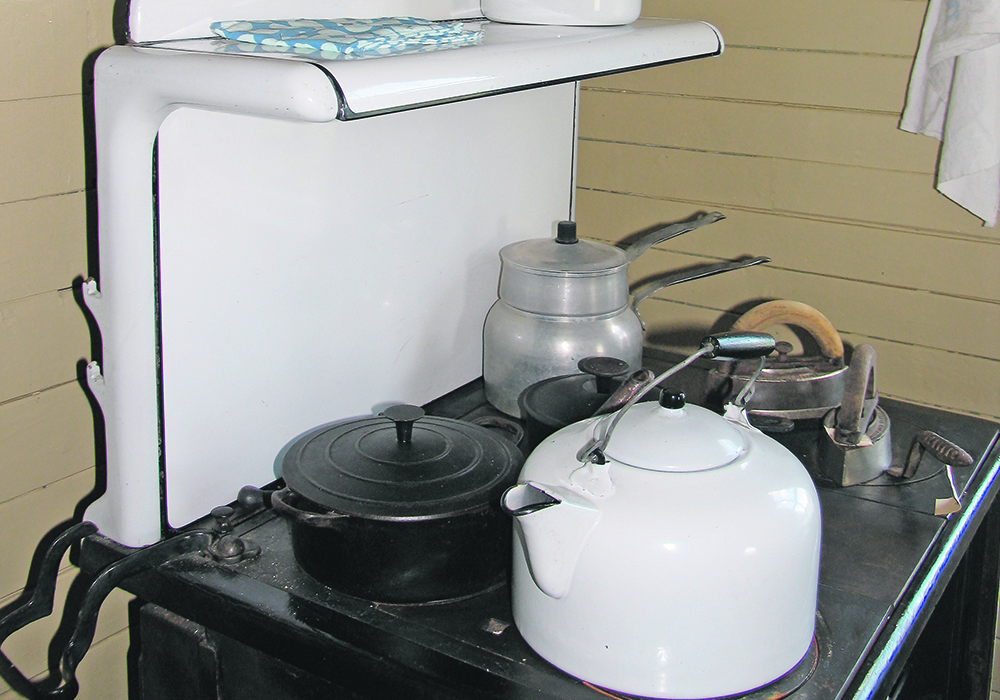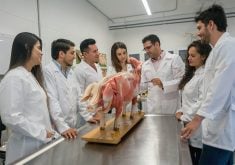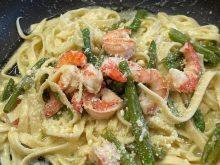The effort that was required to keep the home fires burning contrast sharply with the sterile efficiency of a modern electric range
A small ski resort was located about three kilometres from where I grew up, and while I was able to scratch together 15 cents for the cost of a tow ticket, money for lunch was out of the question.
When I went into the chalet to warm up around noon, the smell of hamburgers and onions served to agitate my hollow stomach, but I was able to ignore its growling complaints for most of the afternoon.
Skiing home through the bush trail in the winter’s early twilight, neither hunger pangs nor the howl of a coyote urged me on half as much as a whiff of smoke from my mother’s kitchen stove. I eagerly anticipated the usual Sunday evening meal of roast pork, mashed potatoes and raisin pie, to be eaten while I warmed my feet on the oven door.
Read Also

Fuel rebate rule change will affect taxes and AgriStability
The federal government recently announced updates to the fuel rebates that farmers have been receiving since 2019-20.
Not only cold toes thawing, crusty loaves of homemade bread cooling, wet woollen mittens drying, but sometimes even the runt from a litter of pigs, bundled in my mother’s apron, found its way to that oven door. Nestled in a shoebox, the piglet would soon revive and start to grunt, much to my amusement and the annoyance of the family cat, awakened from sleep on the warm linoleum floor behind the stove.
On Mondays, a big copper boiler, filled and refilled with snow, stood on top of the wood stove until enough snow had melted to do laundry. As I trudged in and out with armloads of wood and buckets of snow, I questioned the adage about cleanliness being next to godliness.
The laundry having been dried overnight on wooden clothes horses, the next day it was time to iron. Two heavy sad irons with removable wooden handles were heated on top of the stove and exchanged alternately as they cooled down.
Mom seemed to be the lone expert when it came to the cook stove. In the early morning I would hear her rattling the grates and taking out the pan of ashes. Come spring, the hens loved dusting in the pile that had accumulated at the edge of the barnyard.
Returning to the house, Mom crumpled up old newspaper, lit it on fire, added kindling and soon the welcome snap and crackle of a roaring fire warmed the kitchen.
Although there was a temperature gauge on the front of the McClary stove, Mom never trusted it, quickly thrusting her hand in and out of the oven to test whether it was hot enough to bake bread or molasses cake or oatmeal cookies.
Sometimes as an after-school treat she would lightly grease the top of the stove with pork lard and fry potato slices on it — my favourite snack. In return, on Saturday mornings, I polished the chrome on the stove with BonAmi powder, my reflection contorted by the rounded metal trim.
Despite the efforts made to keep the home fires burning in a kitchen wood stove, there was something about it that symbolized warmth and love and caring, especially when contrasted to the sterile efficiency of a modern electric range.















